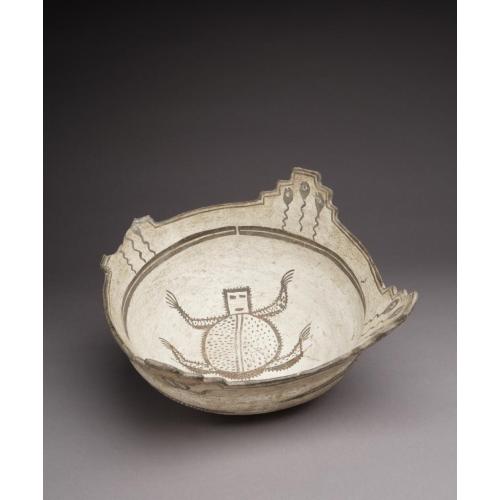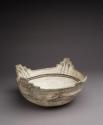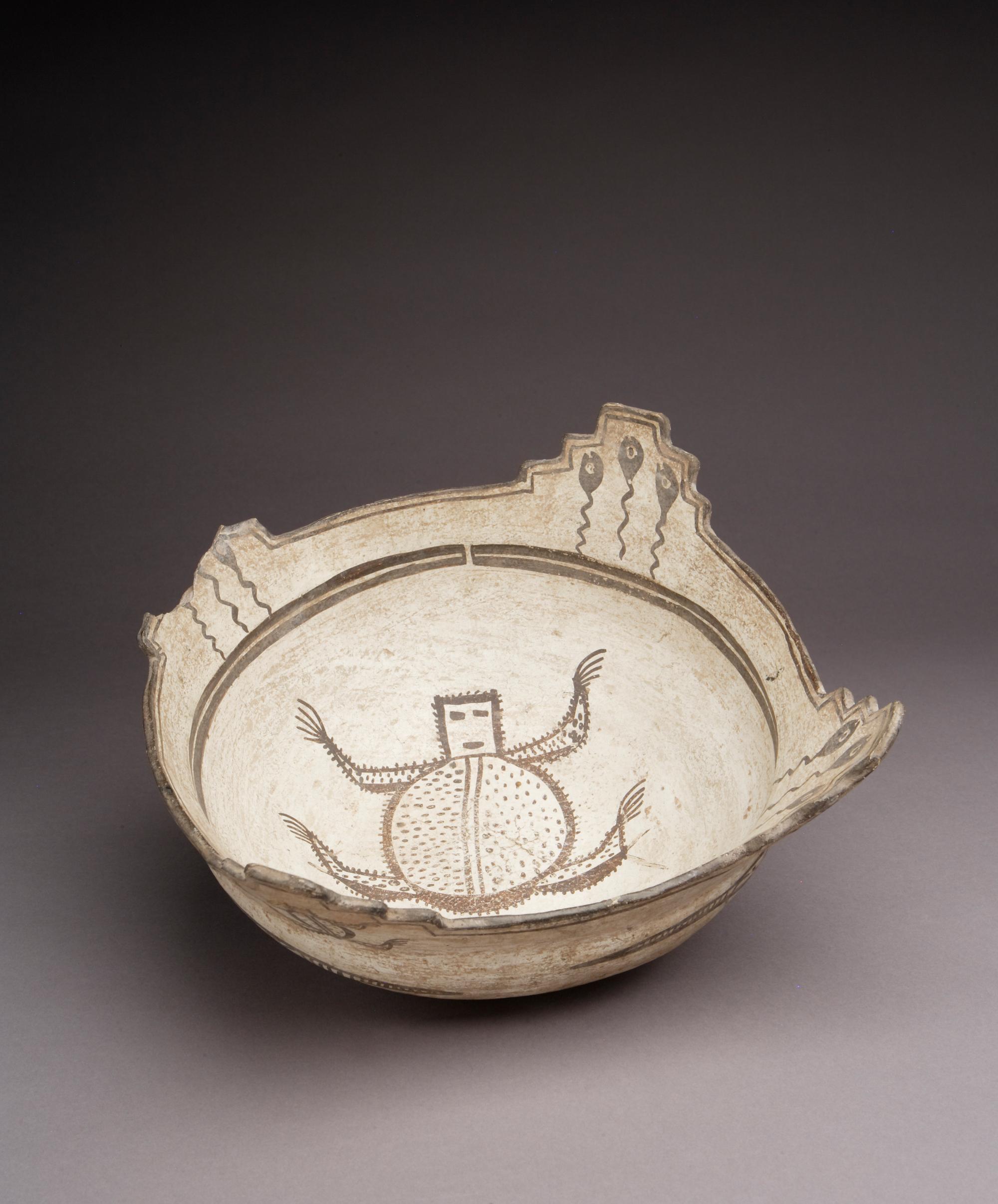
Interior.
Interior. Photograph by Addison Doty. Copyright 2010 School for Advanced Research.
Water medicine bowl, non-consecrated ceremonial
Date: before 1929
Artist or Maker: Unknown
Dimensions:
Dimensions: 16 × 34.5 cm (6 5/16 × 13 9/16 in.)
Weight: 1.6 kg (3.5 lb.)
Medium: clay | paints
Place Made:
Zuni Pueblo, McKinley County, New Mexico, Southwest, United States, North America
Object Number: IAF.1248
Not on view
Tribal Collection Review RemarksJim Enote and Octavius Seowtewa during collection review visit April 6 and 7, 2009 (Events Record “Collection Review: Zuni Tribe, Review 1”): This is a bowl that was made such that it could be used in ceremony, but it probably never was; it shows no physical indications of having been used, such as stains from water with plant or mineral materials that would be used in ceremony. It was likely sold after it was made.
Though it is classified on the catalog card as Pseudo-Ceremonial, it should no longer be classified this way because it is an item that would be appropriate for use in ceremony. Since it's not possible, based on the currently available evidence, to say definitively that it was used in a ceremonial context, it can be referred to as a “non-consecrated ceremonial” item, unless it is later determined that it was; if that happens, it should be re-classified as ceremonial. It is okay for research and publication (photos and text references) and has no special handling or storage requirements.
There are some spots of reddish pigment on the interior of the bowl. The bodies of the kolowisi on the exterior are filled with a design that resembles a yin-yang design. It represents opposing forces and balance in nature.
This is a good example of a correctly-made water medicine bowl; it can be used to show people as an example of what one looks like, without showing a consecrated one that has been used.
In Collection(s)
The Indian Arts Research Center, in collaboration with Native American community scholars, strives to present accurate collections records. Records may be updated as new information becomes available and is reviewed with the Native American community having cultural affinity to particular items. Please write to iarc@sarsf.org if you have questions or concerns related to the documentation.




